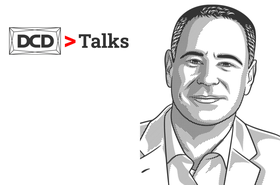If you are operating a data center, you probably already know that you should be reporting (or getting ready to report) emissions from your emergency generators which are Scope 1, the carbon footprint of your utility supply, your carbon usage effectiveness (CUE), your water use and water use effectiveness (WUE), which are Scope 2.
You may also be hearing rumblings about the need to start looking at value chain/supplier emissions which are Scope 3. But what is this Scope 3 really all about and is it something a data center operator should concern themselves with? The short answer is that Scope 3 greenhouse gas (GHG) emissions are significant for data centers and will become a higher percentage of emissions going forward.
There is no shortage of “for profit” and “not for profit” industry organizations giving guidance for Scope 3 sustainability reporting. However, current guidance isn’t typically data center specific, so it is not as helpful for data center operators. This motivated us at Schneider Electric’s Energy Management Research Center to produce white paper 53, ‘Recommended inventory for data center Scope 3 GHG emissions reporting.”
Data center Scope 3 emissions categories
We took the GHG Protocol and recommended allocating a data center’s Scope 3 emissions into nine key GHG source categories and subcategories that would be useful for data center operators:
1) Purchased goods and services
- Core & shell (materials)
- Cloud services
2) Capital goods
- IT equipment
- Power equipment
- Cooling equipment
- Others (i.e., rack, fire protection, lighting)
3) Fuel- and energy-related activities
- Fuels (i.e., diesel, natural gas)
- Energy (i.e., electricity, cooling)
4) Upstream transportation and distribution
- Shipments via road, rail, air, and marine
5) Waste generated in operations
- Solid waste management
- Wastewater management
6) Business travel
- Air, rail, bus, and automobile travel
- Hotel night stays
7) Employee commuting
- Automobile travel
- Public transport
- Others (e.g., telecommuting)
8) Upstream leased assets
- Leased vehicles
- Leased buildings
- Leased colocation data center space (i.e., U-space, rack-space, IT room, or even the whole data center.)
9) Downstream leased assets
- Multi-tenant data centers
- Single-tenant data centers.
Prioritizing data center Scope 3 reduction efforts
Our nine categories provide a comprehensive list of Scope 3 emission categories to take into consideration. However, we did not quantify which categories were the most interesting or significant if you were operating an enterprise data center.
So, as you review, you can probably conclude that some categories like number four, upstream transportation and distribution will have negligible effect on data center Scope 3, while categories like number two, capital goods will have a big effect.
There also could be significant Scope 3 for IT operations in category one, purchased goods and services – cloud services, but while part of an enterprise’s IT Scope 3, it is not associated with a single data centers Scope 3.
The same can be said for number eight, upstream leased assets and number nine, downstream leased assets. If a data center operator wants to prioritize and isolate the Scope 3 operations from a single on-premise enterprise data center, they can now access our new white paper #99 ‘Quantifying data center Scope 3 GHG emissions to prioritize reduction efforts’ and the ‘Data center lifecycle CO2e calculator’ TradeOff Tool. This tool modeled and highlighted the largest drivers of Scope 3 for a single 1MW enterprise data center over a 20-year lifecycle.
Top takeaways from data center CO2e calculator
- Scope 3 emissions are much higher than Scope 2 over the lifetime if servers are changed every 3-4 years.
- IT Servers are the largest drivers of embodied carbon Scope 3 by far.
- If the IT server refresh is extended to every eight years, Scope 2 and 3 are very close over the lifetime.
- The carbon intensity of the utility/location has a large effect on Scope 2 and hence the Scope 2/ Scope 3 ratio.
- Scope 1 is very small.
- IT/Facility infrastructure embodied carbon starts off around 50/50 in year one and is 80/20 cumulative by year 20.
- Core & shell represents only 8-15 percent of all Scope 3 over the data center’s lifetime.
- There is a “fuel and energy” component of Scope 3 that is not in Scope 2 that is quite large.
- Drilling in on physical infrastructure Scope 3, power systems and cooling systems are about equal representing 30 percent each.
Charting a path to reduce Scope 3 emissions
Of course, ‘your mileage may vary’ as they say, and every data center is different and is also a living organism with varying Scope 3 emissions year to year.
Because of this variability, we encourage you to use the Data center lifecycle CO2e calculator to assess how various scenarios impact the sustainability of your data center. This will provide you with a deeper understanding of the factors that drive emissions, including IT and physical infrastructure attributes. Additionally, we recommend reading white paper #99 Quantifying data center Scope 3 GHG emissions to gain valuable insights and recommendations that can assist you in reducing your Scope 3 emissions.
More from Schneider Electric
-

Moving from Scope 2 to Scope 3: The challenges and successes
Why Scope 3 is an entirely new beast
-

DCD>Talks Sustainability Metrics with Rob Bunger, program director of the CTO office, Schneider Electric
In this DCD>Talk we discuss how Schneider Electric approaches sustainability metrics with program director of the CTO office Rob Bunger
-

DCD>Talks demystifying Scope 3 with Adam Compton, Schneider Electric
DCD's Dan Loosemore and Schneider's Adam Compton sit down to discuss the approaches to Scope 3 emissions



